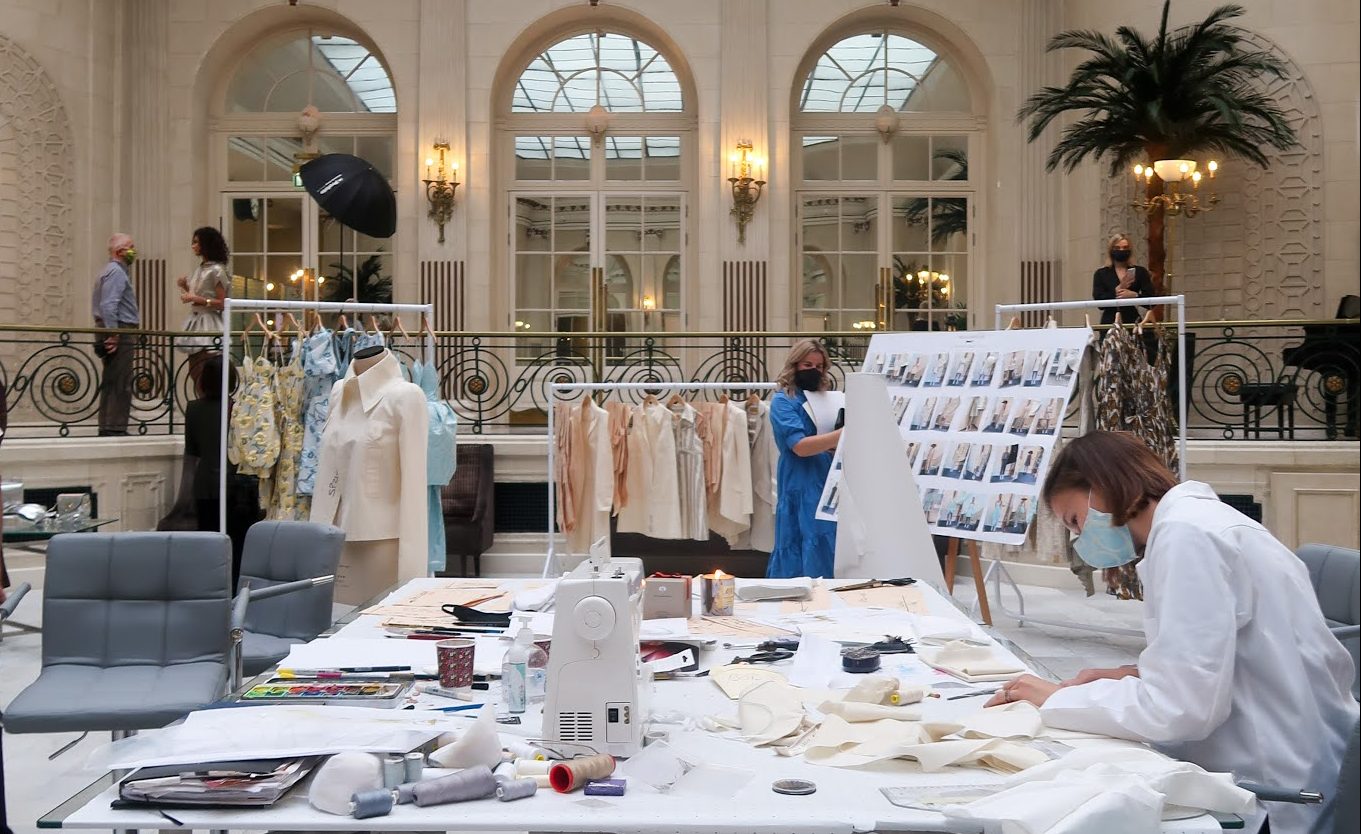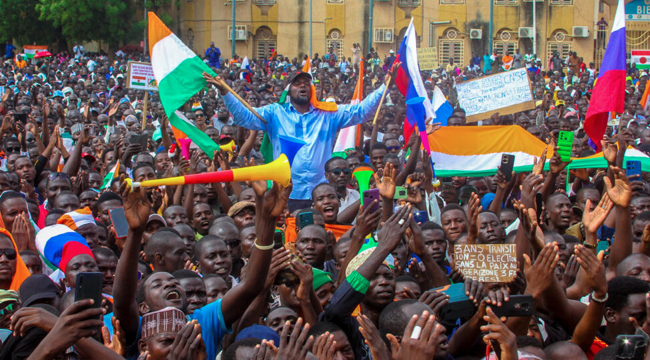I’ve just met Paul Costelloe, the legendary designer, at his SS21 presentation. His was one of the few in-person shows in what was an almost entirely virtual London Fashion Week. It was a gorgeous collection with cool neutrals, pastels and textures, with so many pieces one would love to have in their spring wardrobe – and yet, the most positive part of the entire experience was meeting Paul himself. His old-world charm, good manners, and warmth seemed to be in stark contrast with the new normal of zoom calls, face masks, and social distancing. Above and beyond that, in the six years I’ve been covering fashion week, he was perhaps the most welcoming designer, who seemed genuinely happy to chat and say hi.
I started covering London Fashion Week when I was just fourteen years old. The year was 2014, and mainstream media still dominated coverage. Bloggers were the newcomers, and this was just before the dominance of the Instagram influencer. Fledgling teen bloggers like myself were at the very shallow end of the media pool. I’d started a fashion blog about 18 months prior, and had set my sights on covering fashion shows. I needed to build up a body of work to justify an invitation, so I covered some trade shows; then, in 2014, I sent out scores of emails to press offices politely requesting an invitation. To my (and my parents’) amazement, I actually received a handful of invitations. Some I had to decline because the shows were during school hours. and attending a fashion show for my blog was not seen as a worthy excuse to get me out of lessons.
I’ll never forget my first show: an Orla Kiely presentation in a warehouse studio off Carnaby Street. My mum dropped me off, and I was terrified. I had my camera hanging around my neck, and held my breath as I walked through the door. I was worried about fitting in, not knowing anyone, and not really having a right to be there. I was, after all, only fourteen and surrounded by seasoned veterans of fashion media. My mum gave me some sage advice before I went in, which has fared me well at every season ever since – find someone else on their own and go and say hi. And I did just that. I went up to a girl standing by herself and said hello, took a few pictures and a few notes, and left. But I didn’t talk to many others. I saw a couple of other shows that season and followed the same pattern – chat with someone who looked lonely, take notes, take photos and leave. My coverage started me on the path to earning unsolicited invitations.
My adventures seemed bold and glamorous to my peers and school teachers at the time – in reality, it was quite lonely and intimidating. It’s no secret that the fashion world is an exclusive place, and that it can even be hostile, especially to newcomers. You might remember the OG teen fashion blogger, Tavi Gevinson, who caused outrage in the front row of New York Fashion Week for blocking the view of those behind with her bow-shaped hat. While I was never openly rejected and occasionally people were welcoming, there was definitely an air of snobbery, and I was not embraced as part of the ‘gang’. I was routinely quizzed at the door, receptionists not really believing my name was on the list, and then being openly surprised when they found it was. Frankly, I understood; I was so young, and didn’t have a publication or brand behind me. But I got used to the format of the shows, how to work the crowd, the etiquette, and became more confident in what I was doing. My dad, a very experienced journalist who accompanied me to my early forays to pre-fashion week trade shows, gave me some advice – always go up to the people in charge and introduce yourself. Look them in the eye and ask questions. You are covering the event, he said, so you need to be curious and not be afraid to go straight to the big players. When it comes to your camera, look through the lens when you take the shot, but don’t hide behind it.
And aside from all that, the collections were inspiring, I was pushed out of my comfort zone and it was a privilege to experience the creative passion bustle of London Fashion Week.
This season, fashion week had barely crossed my mind. With the pandemic’s relentless disruption and some accusations that Spring fashion month exacerbated the spread of the virus across Europe, it seemed unlikely it was going to happen at all. There is also the sustainability issue and the debate about the ethics of fashion week, as reflected in Stockholm cancelling the event altogether last year.
But to my surprise and delight, I received an invitation earlier this week. Paul Costelloe was showing his SS21 collection at The Waldorf in London, and I could attend virtually or make an appointment to see the show in person. Visits were being staggered and set up to ensure COVID-19 guidelines were followed. I didn’t hesitate to accept. I was flattered and excited. Some of the first designer pieces I ever owned were Paul Costelloe, including a blazer I wore throughout Sixth Form as I moonlit as a teen fashion blogger. If I was only going to attend one fashion show at these uncertain times, it seemed the most fitting.
Arriving at the Waldorf, face mask on and hands sanitised, I was temperature checked before being allowed into the beautiful and spacious Palm Court room. Unlike the packed, cliquey presentations I’d often attended in the past, I was greeted warmly. There was a virtual show on a screen, and the collection was hung on racks around the room. Next to some of the garments were the clothing patterns and pieces mocked up in cloth – the first time I’d seen the process from paper pattern to finished piece at a fashion week presentation. And right in the centre was Paul himself, sketching designs among the fabrics used in the collection.
After immersing myself in the whimsical fabrics and silhouettes, I channelled the advice my Dad gave me – as I have done much more successfully over the last few years – and introduced myself to the legendary Paul Costelloe. I congratulated him on his collection – it is truly stunning – and said how wonderful it was that he was hosting this show in person. He looked at me and exclaimed with great enthusiasm, ‘Well, I’m alive!’ At 75, during a global pandemic, he showed no ounce of fear of strangers or conversation. He was giving away sketches and offered to sign mine. I was, of course, thrilled. He was immensely kind and polite, complimenting me on my warm nature (thanks Mum and Dad). He also said I had a great, open face – a compliment I will remember for some time to come. He wished me luck in the future and thanked me for coming. It was the friendliest and most encouraging experience I’ve had in fashion week after six years of covering it, from a frightened 14 year-old to a more confident 20 year-old university student. Being able to chat with the designer himself and finding him to be so charming and welcoming was the sort of encouragement which will motivate me to continue.
The show was very different, but not in the way I expected. I thought COVID would trigger fashion to become even more elitist and closed off to only those in the inner circle, and unwelcoming to rookies – but it was absolutely the opposite. And more broadly, the fact that most shows are virtual means anyone could ‘attend’ London Fashion Week – no more fighting for an invitation or convincing gruff and dismissive organisers that you deserve a seat at the show up. But for me it was the face-to-face, being able to see the detail of the designs in a fashion bubble. I smiled and chatted with others in the room, and they smiled and chatted back – we were sharing a unique experience. Though all the appropriate measures of social distancing were applied, there was a positive energy unlike anything I’ve previously felt at fashion week – I think everybody in the room was happy to be there.
The presentation itself was open too – clothing patterns hung next to finished pieces and the central table where Paul sat sketching was adorned with fabric scraps and sewing machines. Further, the process of making the collection was an integral part of the show. The often hidden aspects of a fashion house and how designs are created were part of the exhibition. I think I’m coming of age as a blogger and a writer. Perhaps the fashion shows are doing the same in these times of pandemic and great disruption.
The first line of the press release for the show reads: ‘a spirit of optimism and new beginnings sets the scene for Spring/Summer 2021 at Paul Costelloe’. In the new normal, even in the fashion world, it’s cool to be kind.
This piece first appeared on www.lexilikes.com on September 29, 2020.






0 Comments